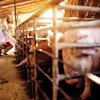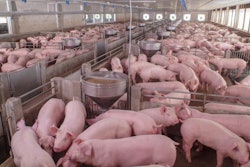
ADM’s chief procurement officer offers tips for preparing for future crises
The COVID crisis exposed weaknesses in the supply chains and risk management plans of many feed operations. As a result, many feed manufacturers and premix producers are using the lessons learned from 2020’s disruptions to prepare for any unforeseen circumstances that could impact their businesses in the future.
During the Feed Strategy webinar, “How to fortify your feed, ingredient supply chain,” Justinas Liuima, senior consultant at Euromonitor International; Thierry Kiener, chief procurement officer at ADM; and Wyatt Johnson, director of procurement and risk, Land O’ Lakes/Purina, examined the ways feed producers can navigate difficult times and supply chain/logistical challenges.
In addition to the valuable insights shared by Liuima and Johnson, Kiener’s presentation offered practical tips all feed industry stakeholders can apply to their business.
“It is our job to expect the unexpected,” Kiener said. “Actually, our industry was rather well prepared.”
He noted that animal agriculture regularly faces major crises with supply disruptions, i.e. inclement weather, natural disasters, animal disease, geopolitical obstacles, etc. However, he admits that while ADM took widespread animal diseases into account in its risk management strategies, it had never considered the impact of human disease outbreaks in its forecasts or predictions.
“Every event teaches us how to manage better the gaps within the supply chain — regardless of the reason behind the issue — so, in a certain way, we were prepared,” he said.
Developing a risk management strategy
Kiener noted the four key steps to ADM’s approach to risk management: preparation, risk identification, action and monitoring/reporting.
Drawing from ADM’s risk management strategy, here are tips for preparedness to ensure continuous service to your customers in the face of a crisis:
- Effective risk management begins well before a crisis strikes. Identify potential supply risks and develop mitigation actions for each.
- Reliable, real-time access to information is essential. Maintain strong relationships with suppliers and category buyers to help forecast upcoming risks.
- In times of crisis, swiftly deploying risk management strategies helps keep employees safe and minimizes disruption. Be flexible to adapt to uncertainty and change.
- A multifunctional tactical team must meet frequently as the crisis evolves. Continually assess the situation and report recommendations to key stakeholders.
“We develop procurement strategies, taking into account the major risks we may face, and develop mitigation measures for each of these risks,” Thierry said.
Feed ingredient sourcing suggestions
He suggests companies avoid single sourcing to deal with supplier risk and sourcing from only one country to deal with geopolitical risk or natural disasters.
In addition, he urges the development of strong relationships with key suppliers because “you need to have a good information network such as your suppliers, distributors, consultants, and that have to be located on the different continents.”
“It’s critical to identify your risk early. To do that, you need to have reliable, real-time access to information,” he said. “Timing is critical.”
Kiener suggests category buyers should be able to act quickly to mitigate the effects of supply disruptions.
“They know the supply market, they are able to early identify and analyze upcoming risk. So they need to be empowered to take decision quickly,” he said.
To hear more about how ADM weathered the COVID crisis and improved its risk preparedness planning, watch the on-demand video of the FS supply chain fortification webinar: https://bit.ly/3gQzlVk


















